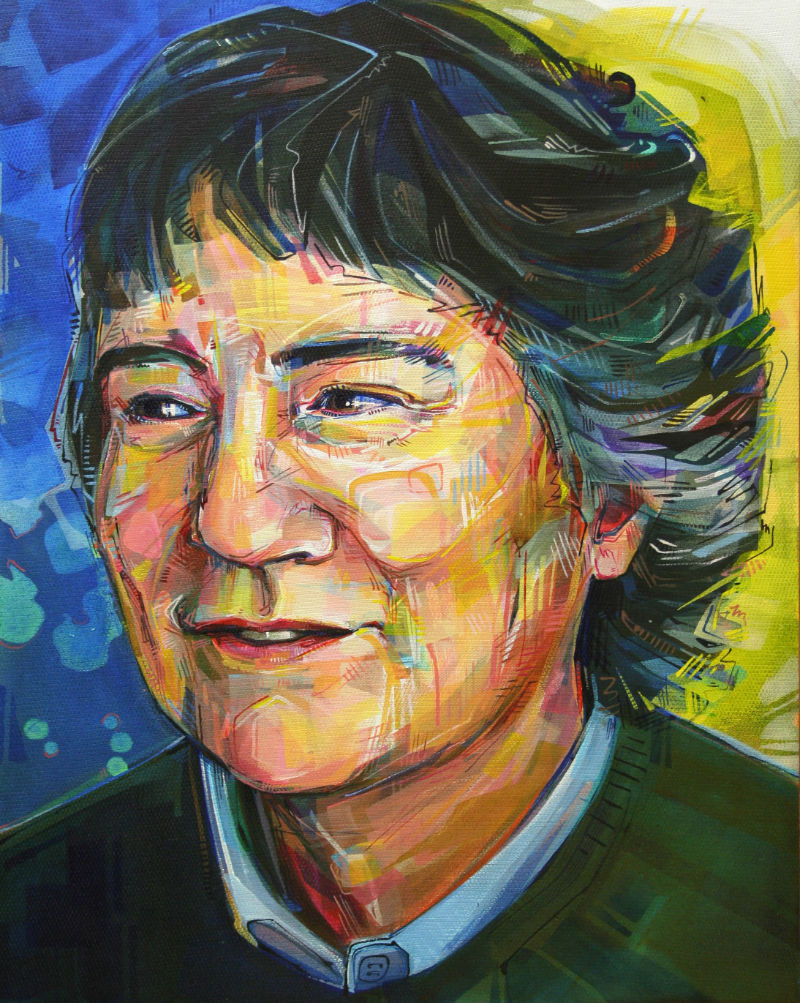Blog / 2009 / How to Make Art on Commission
October 16, 2009
Making art on commission is an excellent way to connect with patrons in a more meaningful way. Though working with a client to develop an artwork can be a complex process, it doesn’t need to be intimidating. I find it helpful to keep a few things in mind when entering into a commission relationship:
- I must be confident.
- I must hang on my clients’ every word.
- I must be able to say “no” if I’m not a good fit.
Clients want to feel like an artist knows what they are doing. Clients are coming to me because of my skill and talent, and they don’t want to feel like they have to coddle me. It’s a given that they like my art, so, unless I give them cause to do otherwise, they will step aside and let me do what I do best.
And being confident is about more than my attitude during interviews and conversations with clients. It’s about demonstrating to patrons that my work is worthwhile and that, though I value their opinion, the finished work is mine, despite the fact that it physically belongs to them.
To that end, contracts are essential. Besides putting everyone on the same page about details like the date of delivery and the different parties’ rights to the image after the work and the money have exchanged hands, written agreements ensure that clients see me as a professional.
Clients constitute an artist’s most engaged audience. Because they are spending their money on my work, patrons tend to have a lot of opinions about it. They are an invaluable source of information about how my work is understood. I take advantage of their interest in my oeuvre by asking them to talk about what they like and dislike in it. This feedback is generally useful, but also vital to the process of making a work for them specifically.
When I am discussing a commission with potential clients, I show them whatever paintings I have in my studio and sometimes supplement that with images of my work—anything to get them talking.
All that said, my obvious confidence in my abilities establishes that what they tell me during this initial conversation is the extent of their input. They are not welcome to ask me to alter the work once the painting is done, because it’s my work. This is a very different relationship from the designer-client one in which the maker’s creativity defers to the sponsor’s guidance.
Clients don’t always pick the right artist. Ideally every patron who’s looking to commission me would understand my work fully and only ever ask me to make paintings that I’m delighted to make, but that isn’t the case.
I paint portraits, so, for the most part, the people who approach me about commissioning art from me are looking for the likeness of a loved one. That said, I often get requests to do a portrait as a surprise for its subject, something which I cannot do since I must meet and photograph my subjects myself in order to make a painting. In these cases, I explain to the potential clients how crucial my photo session is to the final painting and hopefully persuade them that the finished painting will be a surprise even if they subject knows it’s coming. However, if the patrons are too set on their idea to appreciate my process, I simply refer them to an artist who is happy to work from photographs provided by clients.
To my mind, no amount of money is worth making a piece that I am not proud to call mine. If I lost sight of the purpose and philosophy of my work and did commission work simply to make a buck, I would be damaging my entire oeuvre. (If you’re having trouble figuring out what you will and will not do for clients, check out this video.)
The artist-patron relationship is an intricate one, blending business conventions with the artistic sensibilities of both the artist and the patron, but it is well worth it for both parties. My clients help me financially and “facially” to make work that I would never make otherwise, and the commission process allows them to feel especially attached to the work I make.

Katie
2008
acrylic on bird’s eye piqué
30 x 24 inches
“Wow, what can I say? I was so reluctant to have you do my portrait, and why? I was nervous when I came to pick it up, and why? You are amazing—but I already knew that! You captured the essence of me and even I can see it.”
There’s nothing quite like hearing from a client about my work. It makes it easier for me to listen to criticism without getting defensive, and that’s a big part of why making money from my work makes me a better artist.
UPDATE
September 11, 2017
There’s a version of this article written from the client’s perspective called “How to Commission an Artist.” You can learn about why people commission portraits in this video.
Maybe this post made you think of something you want to share with me? Or perhaps you have a question about my art? I’d love to hear from you!
To receive an email every time I publish a new article or video, sign up for my special mailing list.
If you enjoyed this post, Ko-fi allows you to donate. Every dollar you give is worth a bajillion to me!



